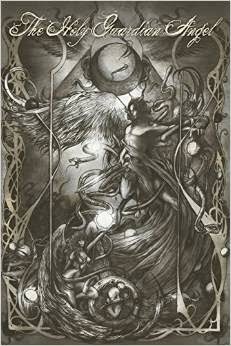Lately an article from Business Insider has been making the rounds on the Internet with the seemingly bizarre contention that ancient people may not have perceived the color blue. The article notes that "blue" does not appear in surviving ancient texts, with Homer for example describing the sea as "wine-dark." There has apparently been much debate in academic circles about whether Homer was blind, using the term poetically, or describing something he was really seeing.
The article seems to be making a case similar to that found in Julian Jaynes' 1982 book The Origin of Consciousness in the Breakdown of the Bicameral Mind. Jaynes hypothesized that since the narratives found in surviving ancient stories generally have to do with people blindly obeying "the words of the gods," this implies that ancient people literally experienced consciousness in the same way. Instead of unified awareness, they perceived "voices in their heads" as external presences that directed their actions, much like some schizophrenics.
The problem with this hypothesis should be obvious in this day and age, but it was less so in 1982 before the rise of modern brain research. It depends first of all on the assumption that popular writing styles directly reflect the awareness of the readers and writers. This would suggest that when fiction writing transitioned from the flowery prose style of the Victorian era to the minimalistic style of writers such as Ernest Hemingway the thinking of people in general became simpler. Needless to say, there's no cognitive research whatsoever that supports this idea.
Furthermore, we have such a tiny sample of ancient literature that drawing any conclusions about ancient people in general from it is hardly representative. We have no idea if all ancient writing resembled the texts we have, and we have no idea why those in particular were passed along. There seems to be no detectable anatomical difference between the brains of ancient and modern people that might explain differences in cognition, so neuroscience doesn't support Jaynes' hypothesis.
Finally, we can't discount the notion that ancient schizophrenics who heard voices and saw visions were thought to be in contact with gods rather than mentally ill, and thus compelling protagonists for stories. The actual incidence of schizophrenia is around 1%, so it's likely there were a fair number of them in every ancient society. We have no way of knowing if they were marginalized or pathologized by those societies the way that they are in ours, and there is some evidence that at least a few of them were considered prophets and so forth.
Where this relates to ancients and the color blue, the Business Insider article tries to make the point that since ancients don't seem to describe the color blue and use different words for phenomena that we describe as blue, maybe they didn't see the color at all. To support this argument, the article refers to research done by Jules Davidoff involving the Himba people of Northwestern Namibia. The Himba language does not have a distinct word for blue, and Davidoff hypothesized that because of this they might have more difficulty distinguishing it from other colors.
Here's what the article has to say about Davidoff's study:
Wow. That seems pretty convincing. Or at least it would, if the article weren't basically complete bullshit. First off, according to this analysis the difference between the blue square and the green ones in the first example and the slightly lighter green square from the other green ones is 4-6 times greater in terms of absolute color value. The screenshots are taken from a BBC documentary which may have slightly distorted the extent of the color differences. Still, it's hard to believe that anyone would have less trouble with the second image. That's probably why the article has generated so much traffic, because its conclusions seem so counter-intuitive
Furthermore, in the analysis article author Mark Liberman notes that he can find no publications of any study that shows what the article claims, and I believe that I have discovered why. The "research" does not exist. Here's a transcript of a talk given by Jules Davidoff in 2005 describing the nature of his study and what he actually found.
Read through that and then take a look at the Business Insider article. The Himba language doesn't have a single term for blue and green, it has a single term for blue and black. And what the experiment showed is that Himba speakers more commonly mixed up navy blue and black than English speakers did. That's an interesting observation, but it's a far cry from what the article claims. Black and navy blue are very close together in terms of raw color values, and while this shows that language seems to influence the categorization to a degree, the effect hardly resembles the claims made by the article.
It seems to me that basic fact-checking would have caught that the Himba conflate blue and black rather than blue and green. And I was able to find Davidoff's talk there with about five minutes of Google searching, which doesn't seem out of line for a professional publication like Business Insider to do. It's also possible that the source of the error is in the BBC documentary itself, but still, if you're a professional journalist, don't you think doing a little searching to verify outlandish claims makes sense?
In the end this seems to me to be another case of "ancient people were idiots," much like the story told in the film What The Bleep Do We Know? that argued the Incans actually couldn't see Francisco Pizarro's ships until a Shaman described them, because they didn't have experience with boats or something. Can you imagine how mentally deficient human beings would be if we could only perceive things we already knew about or understood? We would never be able to learn anything new.
As I've commented on a number of occasions, ancient people had a different knowledge base than we do, but there's no reason to think they were any less intelligent or perceptive than we are today. To claim otherwise seems to be quite condescending to our ancestors, who did quite well when it came to leveraging the knowledge that they had to work with. I suppose that the notion is appealing because some people want to think that because our scientific understanding has evolved it means we have as well, but in fact in biological terms ten thousand years is barely a blip for a long-lived species such as ours.
The article seems to be making a case similar to that found in Julian Jaynes' 1982 book The Origin of Consciousness in the Breakdown of the Bicameral Mind. Jaynes hypothesized that since the narratives found in surviving ancient stories generally have to do with people blindly obeying "the words of the gods," this implies that ancient people literally experienced consciousness in the same way. Instead of unified awareness, they perceived "voices in their heads" as external presences that directed their actions, much like some schizophrenics.
The problem with this hypothesis should be obvious in this day and age, but it was less so in 1982 before the rise of modern brain research. It depends first of all on the assumption that popular writing styles directly reflect the awareness of the readers and writers. This would suggest that when fiction writing transitioned from the flowery prose style of the Victorian era to the minimalistic style of writers such as Ernest Hemingway the thinking of people in general became simpler. Needless to say, there's no cognitive research whatsoever that supports this idea.
Furthermore, we have such a tiny sample of ancient literature that drawing any conclusions about ancient people in general from it is hardly representative. We have no idea if all ancient writing resembled the texts we have, and we have no idea why those in particular were passed along. There seems to be no detectable anatomical difference between the brains of ancient and modern people that might explain differences in cognition, so neuroscience doesn't support Jaynes' hypothesis.
Finally, we can't discount the notion that ancient schizophrenics who heard voices and saw visions were thought to be in contact with gods rather than mentally ill, and thus compelling protagonists for stories. The actual incidence of schizophrenia is around 1%, so it's likely there were a fair number of them in every ancient society. We have no way of knowing if they were marginalized or pathologized by those societies the way that they are in ours, and there is some evidence that at least a few of them were considered prophets and so forth.
Where this relates to ancients and the color blue, the Business Insider article tries to make the point that since ancients don't seem to describe the color blue and use different words for phenomena that we describe as blue, maybe they didn't see the color at all. To support this argument, the article refers to research done by Jules Davidoff involving the Himba people of Northwestern Namibia. The Himba language does not have a distinct word for blue, and Davidoff hypothesized that because of this they might have more difficulty distinguishing it from other colors.
Here's what the article has to say about Davidoff's study:
A researcher named Jules Davidoff traveled to Namibia to investigate this, where he conducted an experiment with the Himba tribe, which speaks a language that has no word for blue or distinction between blue and green.
When shown a circle with 11 green squares and one blue, they could not pick out which one was different from the others — or those who could see a difference took much longer and made more mistakes than would make sense to us, who can clearly spot the blue square.
But the Himba have more words for types of green than we do in English. When looking at a circle of green squares with only one slightly different shade, they could immediately spot the different one.
[Note: I added the arrow to the image below, to indicate the different square.]
Can you? For most of us, that's harder.
Wow. That seems pretty convincing. Or at least it would, if the article weren't basically complete bullshit. First off, according to this analysis the difference between the blue square and the green ones in the first example and the slightly lighter green square from the other green ones is 4-6 times greater in terms of absolute color value. The screenshots are taken from a BBC documentary which may have slightly distorted the extent of the color differences. Still, it's hard to believe that anyone would have less trouble with the second image. That's probably why the article has generated so much traffic, because its conclusions seem so counter-intuitive
Furthermore, in the analysis article author Mark Liberman notes that he can find no publications of any study that shows what the article claims, and I believe that I have discovered why. The "research" does not exist. Here's a transcript of a talk given by Jules Davidoff in 2005 describing the nature of his study and what he actually found.
This is a group of people in Namibia who were asked to do some color matching and similarity judgments for us. It’s a remote part of the world, but not quite so remote that somebody hasn’t got the t-shirt, but it’s pretty remote. That’s the sort of environment they live in, and these are the youngsters that I’m going to show you some particular data on. They are completely monolingual in their own language, which has a tremendous richness in certain types of terms, in cattle terms (I can’t talk about that now), but has a dramatic lack in color terms. They’ve only got five color terms. So all of the particular colors of the world, and this is an illustration which can go from white to black at the top, red to yellow, green, blue, purple, back to red again, if this was shown in terms of the whole colors of the spectrum, but they only have five terms. So they see the world as, perhaps differently than us, perhaps slightly plainer. So we looked at these young children, and we showed them a navy blue color at the top and we asked them to point to the same color again from another group of colors. And those colors included the correct color, but of course sometimes the children made mistakes. What I want to show was that the English children and the Himba children, these people are the Himba of Northwest Namibia, start out from the same place, they have this undefined color space in which, at the beginning of the testing, T1, they make errors in choosing the navy blue, sometimes they’ll choose the blue, sometimes they’ll choose the black, sometimes they’ll choose the purple. Now the purple one, actually if you did a spectral analysis, the blue and the purple, the one on the right, are the closest. And as you can see, as the children got older, the most common error, both for English children and the Himba children, is the increase (that’s going up on the graph) of the purple mistakes. But, their language, the Himba language, has the same word for blue as for black. We, of course, have the same word for the navy blue as the blue on the left, only as the children get older, three or four, the English children only ever confuse the navy blue to the blue on the left, whereas the Himba children confuse the navy blue with the black
Read through that and then take a look at the Business Insider article. The Himba language doesn't have a single term for blue and green, it has a single term for blue and black. And what the experiment showed is that Himba speakers more commonly mixed up navy blue and black than English speakers did. That's an interesting observation, but it's a far cry from what the article claims. Black and navy blue are very close together in terms of raw color values, and while this shows that language seems to influence the categorization to a degree, the effect hardly resembles the claims made by the article.
It seems to me that basic fact-checking would have caught that the Himba conflate blue and black rather than blue and green. And I was able to find Davidoff's talk there with about five minutes of Google searching, which doesn't seem out of line for a professional publication like Business Insider to do. It's also possible that the source of the error is in the BBC documentary itself, but still, if you're a professional journalist, don't you think doing a little searching to verify outlandish claims makes sense?
In the end this seems to me to be another case of "ancient people were idiots," much like the story told in the film What The Bleep Do We Know? that argued the Incans actually couldn't see Francisco Pizarro's ships until a Shaman described them, because they didn't have experience with boats or something. Can you imagine how mentally deficient human beings would be if we could only perceive things we already knew about or understood? We would never be able to learn anything new.
As I've commented on a number of occasions, ancient people had a different knowledge base than we do, but there's no reason to think they were any less intelligent or perceptive than we are today. To claim otherwise seems to be quite condescending to our ancestors, who did quite well when it came to leveraging the knowledge that they had to work with. I suppose that the notion is appealing because some people want to think that because our scientific understanding has evolved it means we have as well, but in fact in biological terms ten thousand years is barely a blip for a long-lived species such as ours.



























6 comments:
"There seems to be no detectable anatomical difference between the brains of ancient and modern people that might explain differences in cognition, so neuroscience doesn't support Jaynes' hypothesis"
That's weak dude. I encourage you to read Jaynes' original book, which has been no way disproved by modern neuroscience, as well as the follow up book "Reflections on the dawn of consciousness."
Jaynes is in no way similar to the intellectual childishness of "what the bleep do we know" Give him some credit.
I agree with you it's absurd to assume ancient people could not see a ship. The question is whether or not they had depth perception. The idea is that people living in a jungle have less proficiency in depth perception. In other words, is depth perception a learned behavior or is it innate? Modern studies have been done on this topic:
http://serendip.brynmawr.edu/bb/neuro/neuro98/202s98-paper2/Navsaria2.html
So the question becomes: "Did ancient people have the same depth perception as modern people."
As far as the color sorting work that has been done/argued, I can see where having more mental categories could assist in the sorting process.
What do you think about the "What color is this dress article" that has been floating around the internet? From what I can tell the researchers are making a big deal about the fact that the human brain corrects for white balance. They took a picture of a dress under weird lighting conditions and the viewer has no context to determine what the true color is. The researchers in that article are simultaneously confusing the issue and and condescending to the level of intelligence present in the general population. I think most people, who may not be aware of the concept of white balance, would still understand it if it was explained to them.
http://magazines.scholastic.com/news/2015/03/What-Color-Is-This-Dress
And as for Homer, he referred to himself as blind in his poems. Also it possibly has to do with wordplay on the name Homer and the greek word for blind. Plus, "sailing the wine dark sea" sounds badass.
Note that nowhere in the article did I ever claim that Jaynes' hypothesis had been disproved by modern neuroscience. Since we are talking about ancient people here and don't have living examples, I can't think of a good way that anyone could do that in a definitive manner.
My point is that a better argument could be made for it if we could detect any significant anatomical brain differences between ancient and modern people that changed around the time Jaynes claims consciousness emerged. We can't. It doesn't mean it didn't happen, but I can't say that I find Jaynes' expostulations from a tiny surviving sample of ancient writing very convincing.
Regarding depth perception, I have a hard time seeing how much of a difference that would make in a person's overall experience of the world. People with only one functional eye (who can't physically have depth perception) get along fine, and while I don't think anyone has ever done a specific study to evaluate how differently their brain process information, I don't see any reason to think it would be all that different.
One of the things that nobody mentions about the dress photo is that it looks different on different monitors. If you've ever tried to order anything online where you needed to match the color, you'll know what I'm talking about. It's really hard because the monitor settings always distort it one way or the other. Also, what you have on your screen along with the picture influences what the color looks like, which is a well-known optical illusion.
In short, I don't think the whole dress thing was very significant in terms of providing any new insights into thinking or even perception. It just happened to attract a lot of attention because people started arguing about it.
To throw in a bit more neuroscience, let's take a look at the mechanics underlying color opponency. That's the process whereby a division of green-vs-red and another of yellow-vs-blue is set up in the visual system.
In the lateral geniculate nucleus of the thalamus, signals from red cones are assigned one pattern, and signals from green cones are assigned the opposing pattern. For the sake of our discussion, we'll call red "negative" and green "positive", because these opposing patterns work like positive and negative numbers.
If red predominates in an area of the visual field, a negative signal is transmitted. Green causes a positive signal. If neither color predominates, there's no signal, in other words, "zero".
Notice that you can't have "greenish-red" the way you can have "yellowish-green" or "reddish-blue" (magenta). That's because the thalamus either transmits a green value, OR a red value, OR the absence of either.
Now, let's take a look at the yellow-vs-blue opponency. For that process, the thalamic neurons add the quantity "red + green" together to get "yellow." Blue cones yield the blue signal. Again, we have a single channel to convey this color information to the visual cortex. Something is EITHER a certain amount of yellow, OR a certain amount of blue, OR neither.
Notice how you can't have "yellowish-blue." When both the yellow and blue pathway are stimulated equally, the net activity approaches zero. In nature, this occurs when the green color is detected -- information conveyed through the red/green pathway. After all, everyone knows that coloring over your yellow crayon with a blue crayon gives a green color! (For grownups who missed out on that pearl of kindergarten life-- try it with a yellow and a blue highlighter.)
For pictures of how the 3-colored cone system feeds into the 2x2 color opponency system, check out the wikipedia article here: https://en.wikipedia.org/wiki/Opponent_process
(Rant: Note that the article makes the ridiculous assertion that "white vs black" is an opponent process. This is easily defeated by pointing out that a.) whitish-black (gray) exists, unlike yellowish-blue and greenish-red, and b.) the brightness system doesn't have a neutral value in between black at one pole and white at the other. It's zero at pitch black and full-strength in blinding light; there's no neural pattern corresponding to "negative brightness", whatever the hell THAT would look like. If you find out-- tell the Setians. The order of the nine angles will be overjoyed.)
Back to the allegations that some cultures fail to distinguish between blue and green... That's a no.
Color opponency pathways are preserved across the primate order. Why the hell would the brain have one pathway for "blue" and a separate for "green" if it had no robust mechanism to distinguish the two? (I don't consider an inborn neural mechanism "robust" if its functionality is threatened by the mere failure of human culture to demand its use.)
Are we to believe that if people aren't taught to notice the difference between yellow and red, they'll fail to distinguish those too?
Quick clarification of the above post: where I said the thalamus adds "red + green" to get yellow, I mean it adds the raw signals from the retina, where we still have a 3 color system.
The brain can't possibly add the "red" and "green" signals after the red/green opponency process has been applied because those are no longer 2 separate signals. The opponency process sets up two unsigned values as opposites, sums them, and outputs a single signed quantity.
Another tidbit-- for those lucky tetrachromatic women, the retina outputs a 4-part color system. The thalamus then sums Blue1 + Blue2 to get the "blue" input for the B/Y opponency process.
[Cue NBC logo] The More You Know!
It's a lot more complex than you're letting on. There has been more recent works that explore Jayne's theory and similar theories. There actually is neuroscience that supports much of it.
The article gets it so wrong, though, that it is hard to tease out exactly what is going on here. It's based on a documentary that garbled the research, and then garbled it further. Most basically, the distinction isn't between green and blue. That's a totally boneheaded mistake. If you read the transcript of the actual talk that I linked to, the distinction is between blue and black among the Himba people.
Also, none of the research indicates that the Himba "could not see" the color blue. In their language, it basically is referred to as something like "light black." Davidoff's study shows that statistically, Western children were slightly better at teasing out distinctions between blues. That's way different than arguing that they couldn't see it, which is what the article seems to be trying to say.
And no, Jayne's hypothesis is not supported by modern neuroscience. How could it be, when it is all about the alleged mental states of people who lived thousands of years ago? We can't just throw them in a brain scanner. About the only research I could see supporting his hypothesis would be:
(1) Identify a specific allele or cluster of alleles that maps to the type of schizophrenia that Jaynes believed most ancient people were afflicted with. We're pretty sure that schizophrenia is genetic because it runs in families, but the exact genetics are not fully understood - so this really needs to be solved before we can go much further with a study.
(2) Once we have (1) solved, analyze what DNA we can find from ancient people.
(3) Identify whether the cluster corresponding to (1) is present in a larger percentage of the population than it is today.
(4) If the answer to (3) is yes, the research would support Jaynes. If the answer is no, it would not. Currently schizophrenics are between 1 and 2 percent of the population. Was that higher in ancient times? It might have been, but I don't find Jaynes' argument that it definitely was to be very convincing.
Since the art and writing that survived from the ancient world is such a tiny percentage of what was really written, there is no way that you can conclude much of anything about how people thought about the world from just that sample.
The Romans, who weren't anywhere near as early as what Jaynes is talking about, read novels for hundreds of years. Do you know how many of those survived? One, The Golden Ass by Apuleius.
Even less has survived from the period Jaynes was trying to analyze. So the sample size alone means his analysis is basically pointless. It's possible that he could be right, of course, but his conclusions are not scientific. They basically are guesswork.
Post a Comment